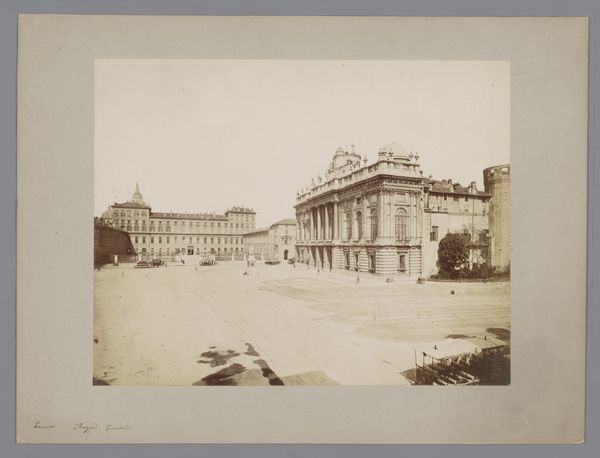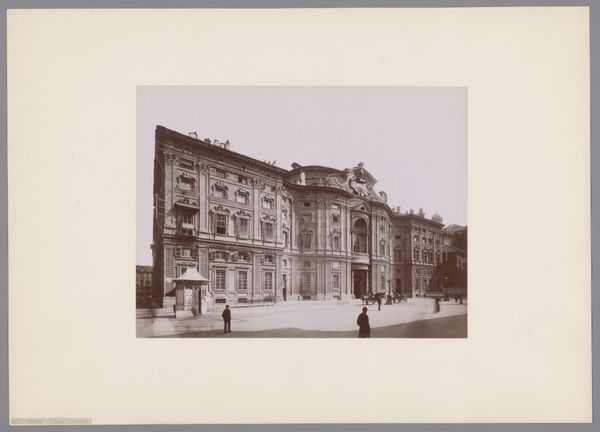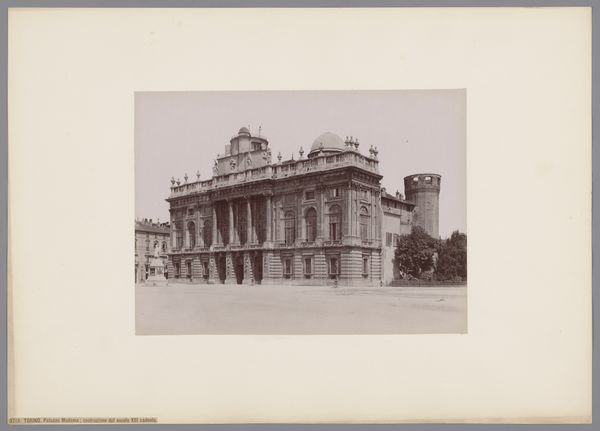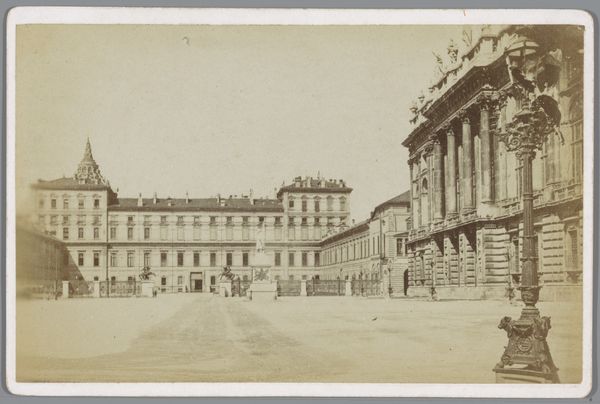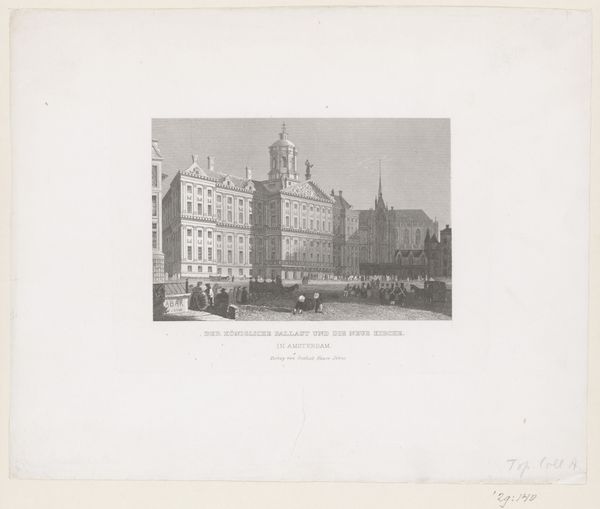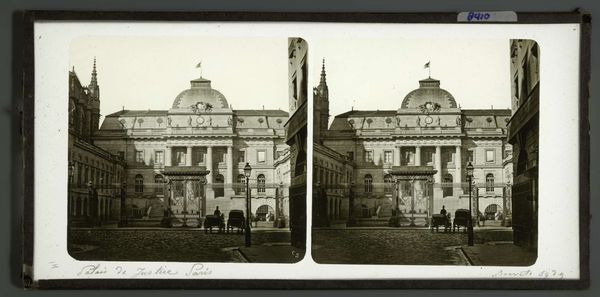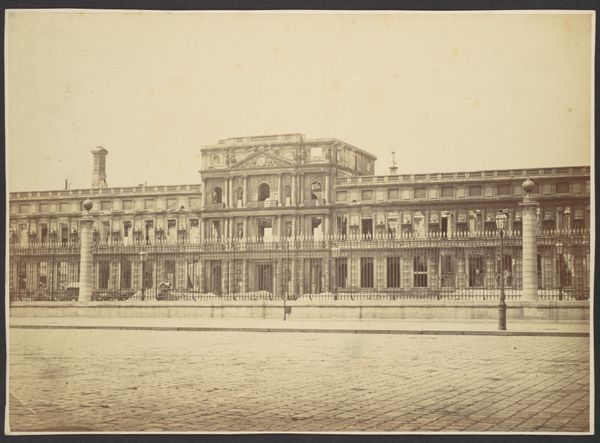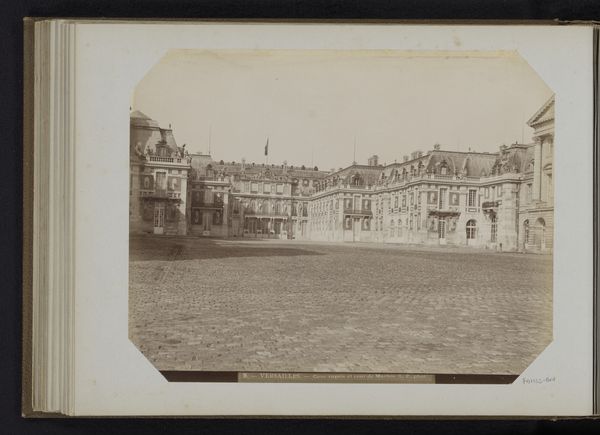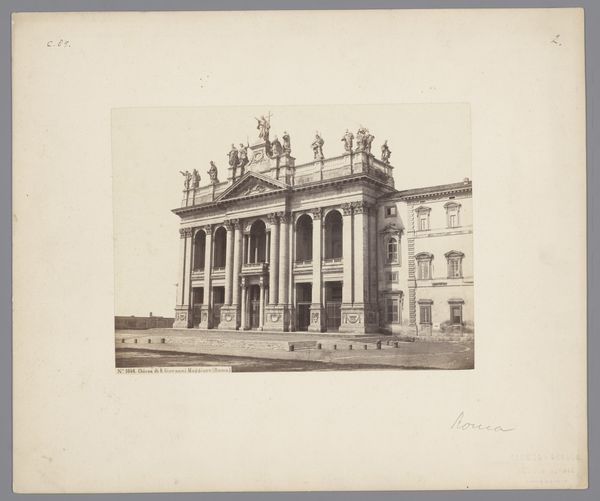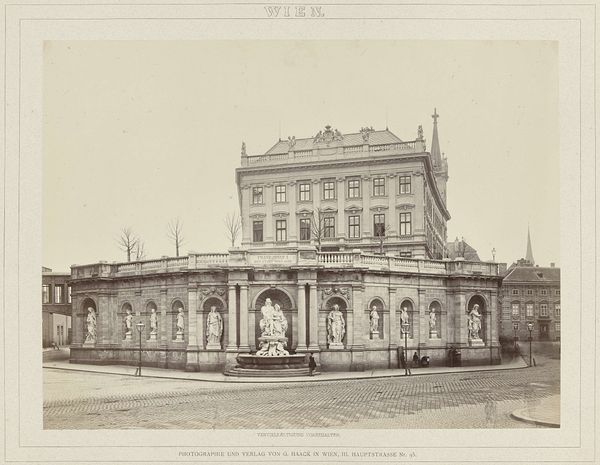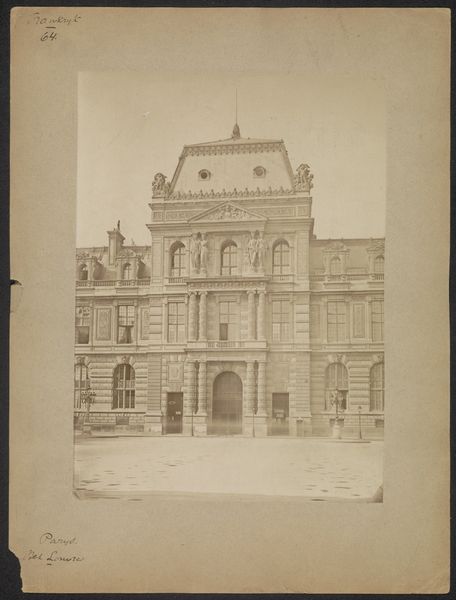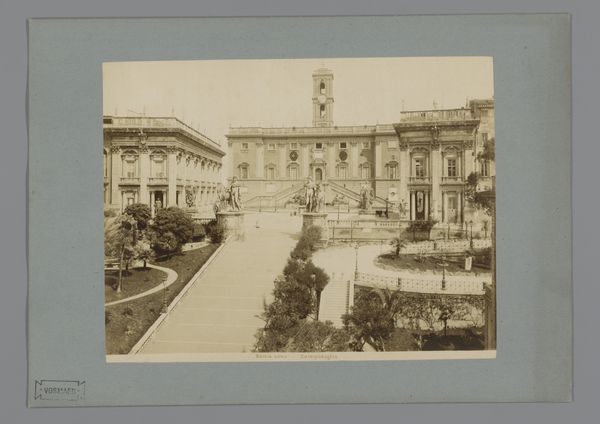
print, photography, albumen-print
#
neoclacissism
# print
#
photography
#
cityscape
#
albumen-print
#
realism
Dimensions: height 304 mm, width 408 mm
Copyright: Rijks Museum: Open Domain
Curator: The gravity in this shot is immense, like something ancient staring back. It must be Charles Soulier's albumen print, taken sometime between 1850 and 1870, titled "Het paleis van justitie te Parijs", a rather clinical rendering of the Palace of Justice in Paris. Editor: Yes, the composition definitely leans into that gravitas. The imposing façade, those heavy gates... it all conveys a sense of unflinching authority. It is an impressive neoclassical building. What does it tell us about the justice system itself at that moment in time? Curator: The Neoclassical architecture deliberately evokes Roman ideals of law and order, connecting 19th-century France to a lineage of power. This was during a period of massive urban reconstruction in Paris under Haussmann. Photography like this played a crucial role in documenting and glorifying the renewed urban landscape, implicitly celebrating the power of the state through its monumental architecture. Editor: Indeed, that clock above the colonnade becomes a strong symbolic element then, less about timekeeping, more about timeless, unflinching justice. Even the wrought iron entrance grills act as symbolic gatekeepers. Do you think Soulier’s work flattens the narrative, idealizing rather than revealing a true sense of justice and public role? Curator: Soulier certainly was a man of his time, I would be quite interested to learn his background and political opinions. The albumen print gives everything a sepia tone which imparts both grandeur and distance, almost removing everyday life from the sphere of law. Editor: Precisely, it almost mythologizes the institution, stripping it of everyday nuances. Though there's some small figures on the left side near what I think might be the entrance of the building, they add to that notion of grandeur as their mere presence accentuates the overall scale. That sense of human presence, dwarfed by the Palace of Justice, underlines a key societal hierarchy. Curator: Viewing the photograph now provides us with more historical context, as opposed to at the time. In any case, it shows that imagery played a pivotal role in shaping public perceptions and establishing enduring legacies, something we’re not strangers to in this day and age. Editor: Agreed. These glimpses into how societies visualize justice resonate through the ages. Thanks for sharing your perspectives, this has been illuminating.
Comments
No comments
Be the first to comment and join the conversation on the ultimate creative platform.
